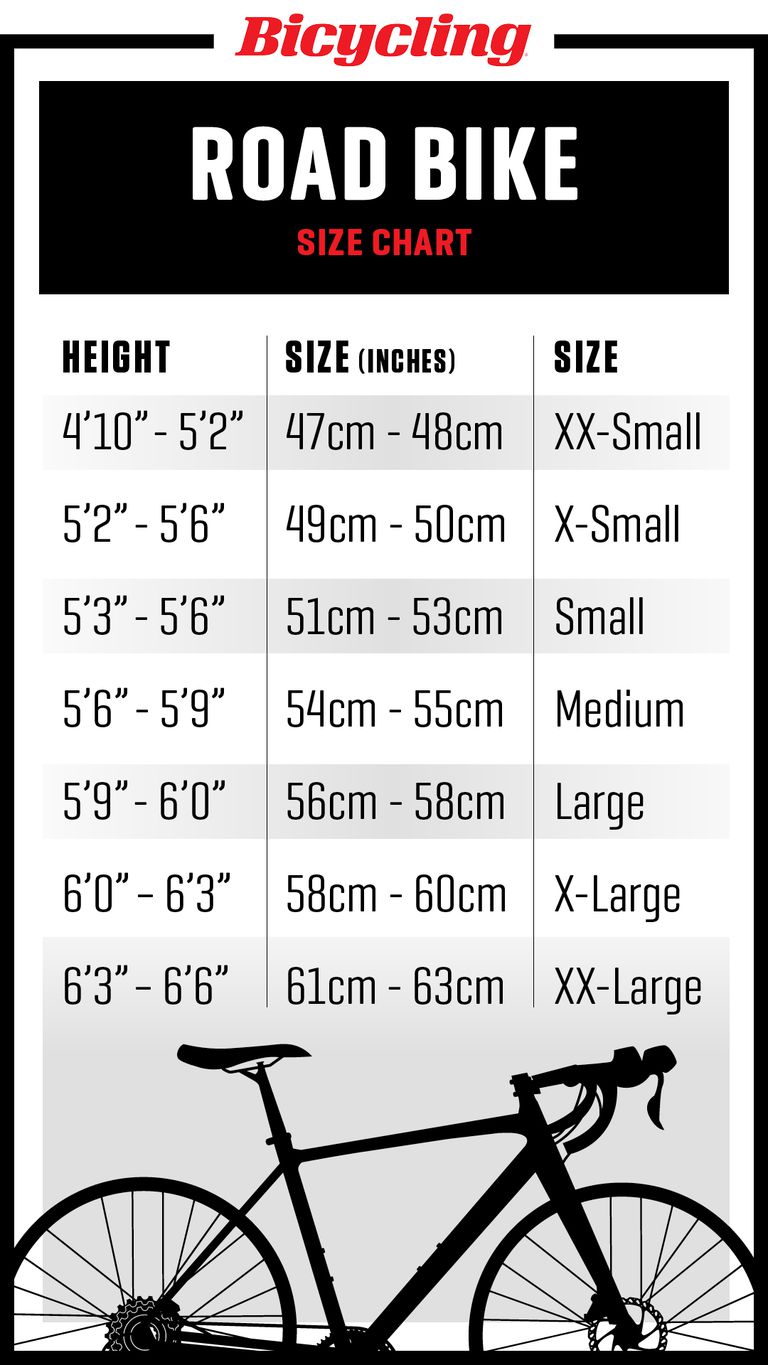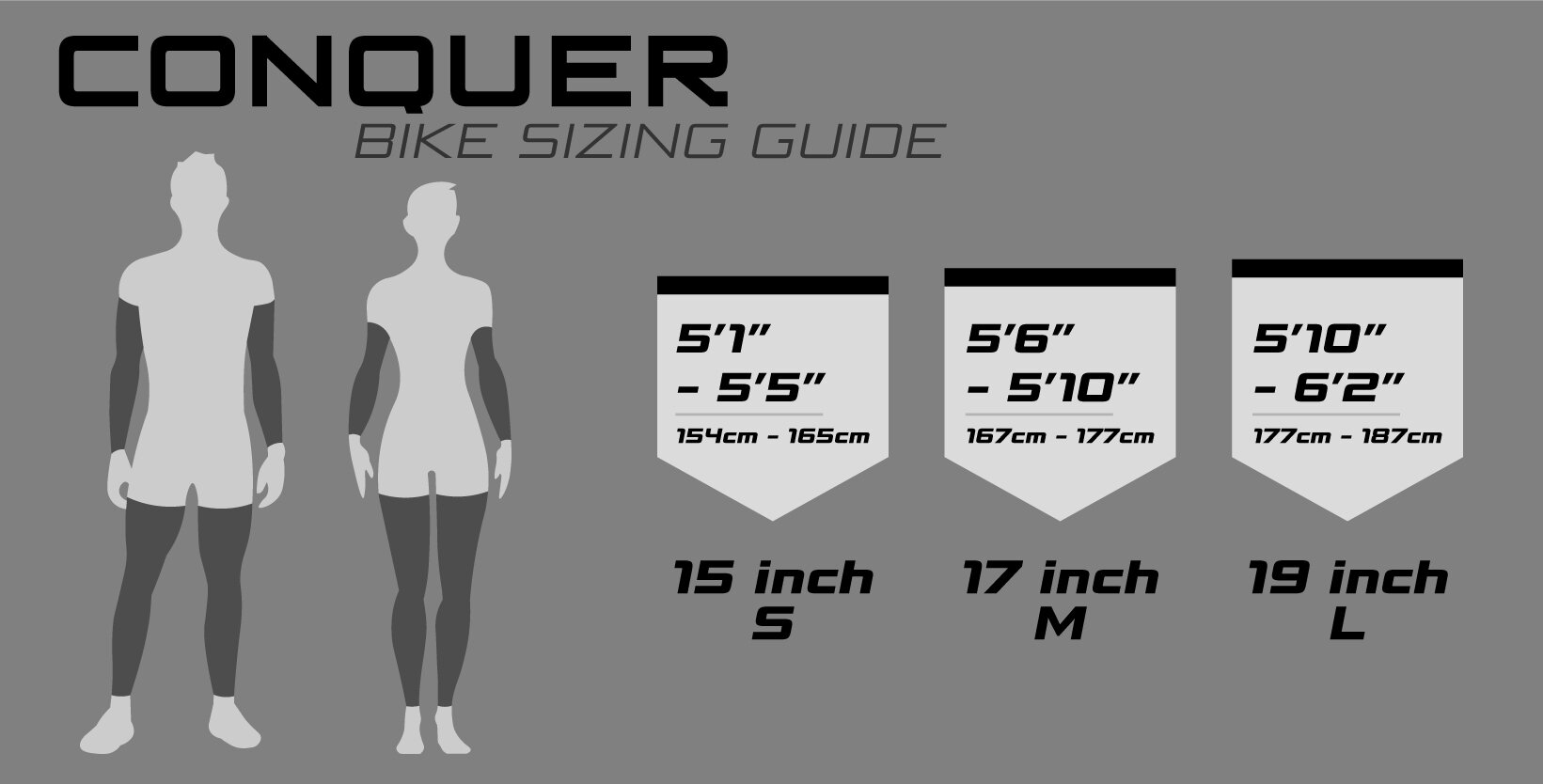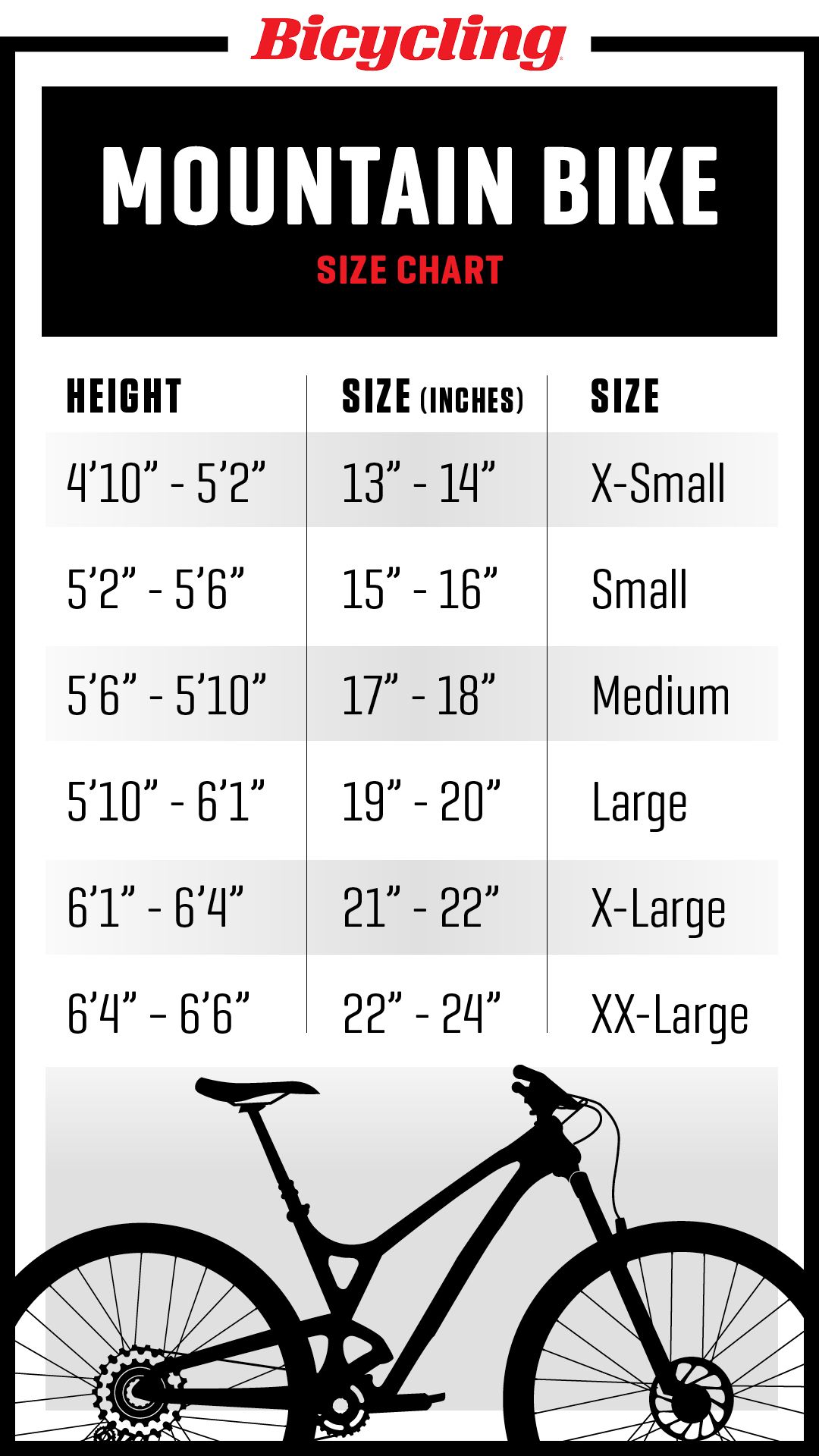Why Proper Bike Sizing Matters for Female Riders
When it comes to mountain biking, a well-fitting bike is essential for a comfortable and enjoyable riding experience. Proper bike sizing is particularly important for female riders, as it can significantly impact their performance, confidence, and overall safety. A bike that is too small or too large can lead to discomfort, fatigue, and even injury. On the other hand, a bike that fits perfectly can enhance a rider’s ability to control the bike, maintain balance, and navigate challenging terrain.
According to a mountain bike size guide for ladies, a bike that is too small can cause a rider to feel cramped and restricted, while a bike that is too large can make it difficult to control. This is why it’s crucial for female riders to find a bike that is tailored to their specific needs and body type. By doing so, they can enjoy a more comfortable and confident riding experience, which can ultimately lead to improved performance and a greater sense of enjoyment.
In addition to comfort and performance, proper bike sizing can also play a critical role in preventing injuries. A bike that is too small or too large can put unnecessary strain on a rider’s muscles and joints, leading to fatigue, pain, and even long-term damage. By finding a bike that fits perfectly, female riders can reduce their risk of injury and enjoy a healthier, more sustainable riding experience.
So, how can female riders find a bike that fits their specific needs and body type? The answer lies in understanding the key factors that influence bike sizing, including standover height, seat tube length, and handlebar width. By taking these factors into account and consulting a mountain bike size guide for ladies, female riders can find a bike that is tailored to their unique needs and preferences.
Ultimately, proper bike sizing is essential for female riders who want to enjoy a comfortable, confident, and safe riding experience. By finding a bike that fits perfectly, they can unlock their full potential, improve their performance, and enjoy the many benefits that mountain biking has to offer.
Understanding Women’s Mountain Bike Geometry and Fit
When it comes to women’s mountain bikes, geometry and fit play a crucial role in determining the overall riding experience. Unlike men’s bikes, women’s mountain bikes are designed to accommodate the unique physical characteristics and riding styles of female riders. In this section, we’ll delve into the key differences in mountain bike geometry and fit for women, and provide tips for finding the right fit.
One of the most important factors to consider when it comes to women’s mountain bike geometry is standover height. Standover height refers to the distance between the ground and the top tube of the bike. A lower standover height can make it easier for female riders to mount and dismount the bike, while also providing greater stability and control. When choosing a women’s mountain bike, look for a bike with a standover height that allows you to stand over the bike with both feet flat on the ground.
Another critical factor to consider is seat tube length. Seat tube length refers to the length of the tube that connects the saddle to the bottom bracket. A shorter seat tube length can provide greater comfort and flexibility for female riders, while also allowing for a more upright riding position. When choosing a women’s mountain bike, look for a bike with a seat tube length that allows you to maintain a comfortable riding position.
Handlebar width is also an important consideration when it comes to women’s mountain bike geometry. A narrower handlebar width can provide greater comfort and control for female riders, while also allowing for easier maneuverability. When choosing a women’s mountain bike, look for a bike with a handlebar width that allows you to maintain a comfortable riding position.
In addition to these factors, it’s also important to consider the overall fit of the bike. A well-fitting bike should allow you to maintain a comfortable riding position, with your knees slightly bent and your weight evenly distributed between the saddle and handlebars. When test riding a women’s mountain bike, pay attention to how the bike feels and responds to your body position.
By understanding the key differences in mountain bike geometry and fit for women, female riders can find a bike that is tailored to their unique needs and preferences. Whether you’re a beginner or an experienced rider, a well-fitting bike can make all the difference in your riding experience. Consult a mountain bike size guide for ladies to find the perfect fit for your next adventure.
How to Measure Yourself for a Women’s Mountain Bike
To find the perfect fit for a women’s mountain bike, it’s essential to take accurate measurements of your body. This will help you determine the ideal bike size and ensure a comfortable riding experience. In this section, we’ll provide a step-by-step guide on how to measure yourself for a women’s mountain bike.
**Inseam Measurement**
To take your inseam measurement, stand against a wall with your feet shoulder-width apart. Place a book or a ruler between your legs, with the edge of the book or ruler touching the wall. Measure the distance from the top of the book or ruler to the floor. This will give you your inseam measurement.
**Height Measurement**
To take your height measurement, stand against a wall with your feet shoulder-width apart. Measure the distance from the top of your head to the floor. This will give you your height measurement.
**Arm Length Measurement**
To take your arm length measurement, hold your arm straight out to the side at shoulder height. Measure the distance from the center of your back to the tip of your fingers. This will give you your arm length measurement.
**Using Your Measurements to Determine Bike Size**
Once you have taken your measurements, you can use them to determine your ideal bike size. Consult a mountain bike size guide for ladies to find the corresponding bike size for your measurements. Keep in mind that different brands may have slightly different sizing, so it’s essential to check the specific brand’s size chart.
**Tips for Taking Accurate Measurements**
To ensure accurate measurements, make sure to wear the same type of shoes and clothing you plan to wear while riding. Also, take your measurements at the same time of day, as your body can fluctuate slightly throughout the day.
By taking the time to measure yourself accurately, you can find a women’s mountain bike that fits you perfectly. Remember to consult a mountain bike size guide for ladies to ensure the best possible fit. With the right fit, you’ll be able to enjoy a comfortable and enjoyable riding experience.
Women’s Mountain Bike Size Charts: A Comparison of Top Brands
When it comes to finding the perfect fit for a women’s mountain bike, size charts can be a valuable resource. However, different brands may have slightly different sizing, which can make it challenging to determine the ideal bike size. In this section, we’ll compare the size charts of top women’s mountain bike brands, including Trek, Specialized, and Giant.
**Trek Women’s Mountain Bike Size Chart**
Trek’s women’s mountain bike size chart is based on a combination of height and inseam measurements. The chart provides a range of sizes, from XS to L, and recommends the corresponding bike size based on the rider’s measurements.
**Specialized Women’s Mountain Bike Size Chart**
Specialized’s women’s mountain bike size chart is also based on a combination of height and inseam measurements. However, the chart provides a more detailed breakdown of sizes, with multiple options within each size range.
**Giant Women’s Mountain Bike Size Chart**
Giant’s women’s mountain bike size chart is based solely on height measurements. The chart provides a range of sizes, from XS to L, and recommends the corresponding bike size based on the rider’s height.
**Comparison of Size Charts**
While all three brands provide size charts, there are some notable differences between them. Trek and Specialized both provide a more detailed breakdown of sizes, while Giant’s chart is more straightforward. Additionally, Trek and Specialized both recommend bike sizes based on a combination of height and inseam measurements, while Giant recommends bike sizes based solely on height.
**Tips for Navigating Size Charts**
When using a size chart to determine your ideal bike size, it’s essential to keep in mind that different brands may have slightly different sizing. Be sure to consult the specific brand’s size chart and take into account any unique features or recommendations. Additionally, consider visiting a local bike shop to test ride different bikes and get a professional fitting.
By comparing the size charts of top women’s mountain bike brands, you can gain a better understanding of how to find the perfect fit for your next bike. Remember to consult a mountain bike size guide for ladies to ensure the best possible fit.
Real-World Examples: Women’s Mountain Bike Reviews and Fit Feedback
To give you a better understanding of how women’s mountain bikes fit and perform in real-world conditions, we’ve gathered feedback from female riders and reviewed some popular models. In this section, we’ll discuss the fit and sizing of the Trek Fuel EX and the Specialized Stumpjumper, two popular women’s mountain bikes.
**Trek Fuel EX Review**
The Trek Fuel EX is a versatile trail bike designed for women who want to tackle a variety of terrain. According to Trek’s size chart, the Fuel EX is available in sizes ranging from XS to L. We spoke with several female riders who own the Fuel EX, and they reported that the bike fits true to size. One rider noted that the bike’s standover height was slightly lower than expected, making it easier to mount and dismount.
**Specialized Stumpjumper Review**
The Specialized Stumpjumper is a high-performance trail bike designed for women who want to push their limits. According to Specialized’s size chart, the Stumpjumper is available in sizes ranging from XS to L. We spoke with several female riders
Additional Tips for Finding the Perfect Fit
While understanding women’s mountain bike geometry and fit, measuring yourself, and consulting size charts are essential steps in finding the perfect fit, there are additional tips to consider. In this section, we’ll provide additional advice for finding the perfect fit, including visiting a local bike shop, test riding different bikes, and considering factors like riding style and terrain.
**Visit a Local Bike Shop**
Visiting a local bike shop is an excellent way to get a professional fitting and find the perfect bike. Bike shop employees are trained to help you find the right bike and ensure a proper fit. They can also provide valuable advice on how to adjust the bike to fit your specific needs.
**Test Ride Different Bikes**
Test riding different bikes is an excellent way to find the perfect fit. By test riding different bikes, you can get a feel for how the bike handles and whether it’s comfortable for you. Make sure to test ride bikes in different sizes and styles to find the one that fits and feels the best.
**Consider Riding Style and Terrain**
When finding the perfect fit, it’s essential to consider your riding style and terrain. If you’re a beginner, you may want a bike with a more upright riding position and a lower standover height. If you’re an experienced rider, you may want a bike with a more aggressive riding position and a higher standover height.
**Consider Your Body Type**
When finding the perfect fit, it’s also essential to consider your body type. If you have a longer torso, you may want a bike with a longer seat tube length. If you have shorter legs, you may want a bike with a shorter standover height.
**Don’t Be Afraid to Ask for Help**
Finally, don’t be afraid to ask for help when finding the perfect fit. Bike shop employees, online forums, and cycling communities are all great resources to help you find the perfect bike. Don’t be afraid to ask questions or seek advice from more experienced riders.
By following these additional tips, you can find the perfect fit for your women’s mountain bike. Remember to consult a mountain bike size guide for ladies to ensure the best possible fit.
Common Mistakes to Avoid When Sizing a Women’s Mountain Bike
When sizing a women’s mountain bike, there are several common mistakes to avoid. These mistakes can lead to a poor fit, discomfort, and even injury. In this section, we’ll discuss the most common mistakes to avoid when sizing a women’s mountain bike.
**Relying Too Heavily on Size Charts**
While size charts can be a useful tool, relying too heavily on them can lead to a poor fit. Size charts are only a guide, and they don’t take into account individual differences in body shape and size. Make sure to test ride different bikes and consider factors like riding style and terrain when finding the perfect fit.
**Neglecting to Consider Riding Style**
Riding style is an essential factor to consider when sizing a women’s mountain bike. If you’re a beginner, you may want a bike with a more upright riding position and a lower standover height. If you’re an experienced rider, you may want a bike with a more aggressive riding position and a higher standover height.
**Failing to Test Ride the Bike**
Test riding a bike is essential to ensure a proper fit. Don’t rely solely on size charts or online reviews. Test ride different bikes to find the one that feels and fits the best.
**Ignoring Body Type**
Body type is another essential factor to consider when sizing a women’s mountain bike. If you have a longer torso, you may want a bike with a longer seat tube length. If you have shorter legs, you may want a bike with a shorter standover height.
**Not Considering Terrain**
Terrain is another critical factor to consider when sizing a women’s mountain bike. If you’ll be riding on smooth trails, you may want a bike with a more aggressive riding position and a higher standover height. If you’ll be riding on rough terrain, you may want a bike with a more upright riding position and a lower standover height.
By avoiding these common mistakes, you can find the perfect fit for your women’s mountain bike. Remember to consult a mountain bike size guide for ladies to ensure the best possible fit.
Conclusion: Finding Your Ideal Women’s Mountain Bike Size
When it comes to finding the perfect fit for a women’s mountain bike, there are several factors to consider. From understanding women’s mountain bike geometry and fit to measuring yourself and navigating size charts, it’s essential to take the time to find the right bike. By following the tips and advice outlined in this article, you can find a bike that fits and feels great, allowing you to ride with confidence and comfort.
Remember, proper fit and sizing are crucial for a comfortable and enjoyable riding experience. A well-fitting bike can reduce the risk of injury and discomfort, while also improving performance and confidence. Don’t be afraid to ask for help or seek advice from more experienced riders or bike shop employees.
By taking the time to find your ideal women’s mountain bike size, you can unlock a world of riding possibilities. Whether you’re a beginner or an experienced rider, the right bike can make all the difference in your riding experience. So why wait? Start your search today and find the perfect bike for you.
Consult a mountain bike size guide for ladies to ensure the best possible fit. With the right bike and a little practice, you’ll be riding like a pro in no time. Happy trails!






